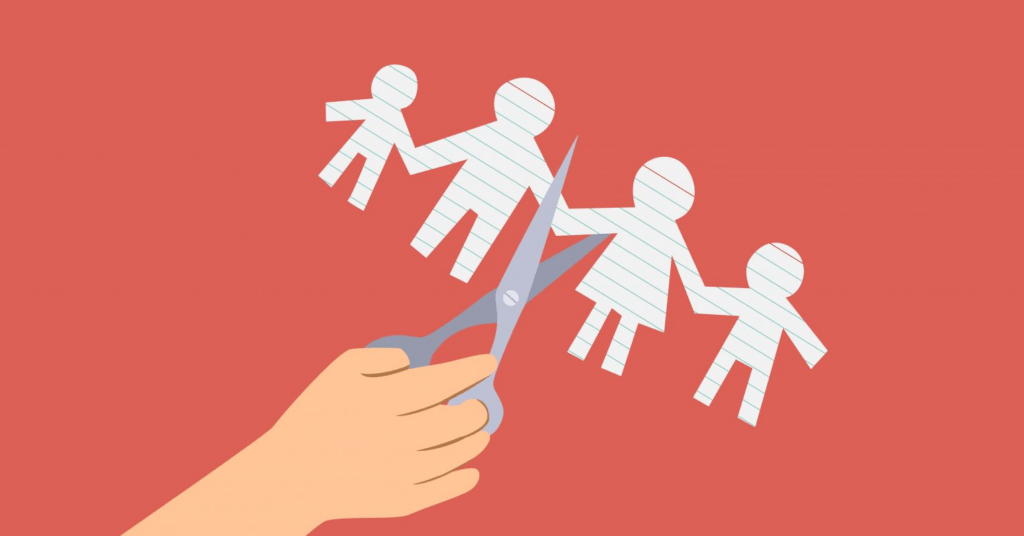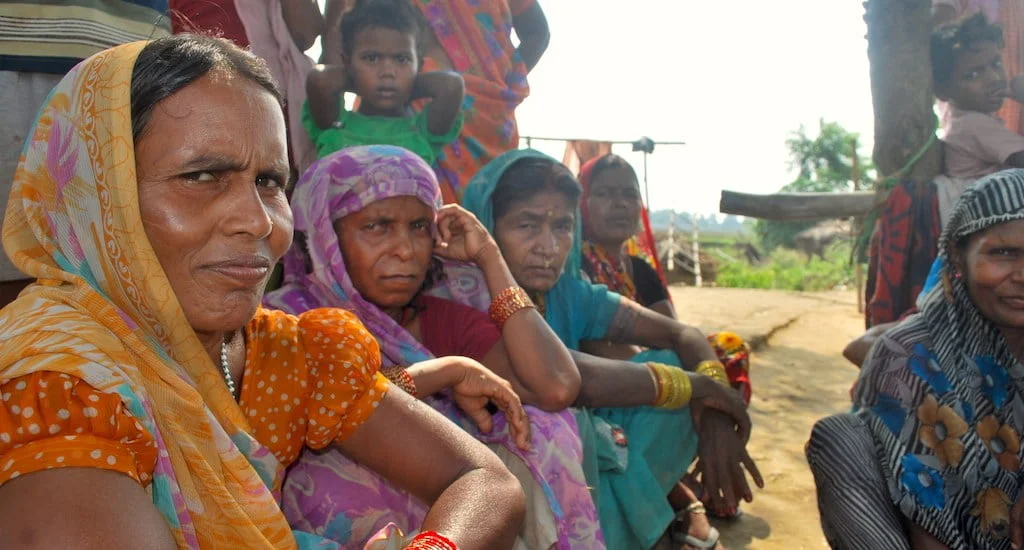Growing up, we all are conditioned to believe that no matter how good or bad a family is, it is the only thing that sticks. As young kids, seeing our parents fight, or our mother’s silence in front of our grandparents, everything seems normal.
Like many, my brother and I grew up in a traditional Indian household where my mother was supposed to stay at home and my father was supposed to earn – the roles that define a traditional Indian household or a normal family.
But does a ‘normal‘ family mean a functional family, and what is it that separates functional families from dysfunctionality? Does having traces of violence, trauma, mental or physical abuse, or disability makes a family dysfunctional?

What is dysfunctionality and how to identify dysfunctional families?
According to the Cambridge dictionary, dysfunctional refers to something that is not working or someone who is not behaving normally. Family refers to a group of two or more people related by birth, arrangement, or adoption, constituting a single household. Thus, a dysfunctional family would be a family that is unable to function normally.
According to the McGraw-Hill Concise Dictionary of Modern Medicine, ‘a dysfunctional family’ is “a family with multiple ‘internal’ conflicts, like sibling rivalries, parent-child conflicts, domestic violence or ‘external’ conflicts like alcoholism, adultery or something that affects the basic needs of the family unit“.
While there are not any specific factors to classify a family as dysfunctional, a common thread is that adults who grow up in a dysfunctional family unit are often deprived of emotional support, stability, and individuality that help in building self-esteem and healthy coping mechanisms.
While it is not good to rely on toxic relationships, the reality is that despite having toxic family patterns people still tend to live with their families like in the case of my fourth respondent who feels that “…despite having a very strong history of emotional trauma, the guilt of leaving the family for good remains”. She says, “I know among all my brothers my mom favours me the least, most of our conversations are personal attacks on me but still I have a soft corner for her in the hope that she sees this one day“
The question that remains here is what type of families are more prone to dysfunctionality. According to a July policy report of 2019 by the European Research Council, it was highlighted “that there was a decline in individual subjective well-being either happiness or life satisfaction once parenthood begins”.
Another study by Mom’s expresso on “Mom’s Happiness Index” highlighted that less than 50 percent of mothers are happy with their current state of life. However, this study also highlighted that the growing unhappiness is not the result of having a child, but the societal pressures and unattainable expectations from the immediate family that mothers face.
As a result of this, many women question themselves and often degrade themselves before their husbands and children. When it comes to working mothers, this pressure of being a good mom just worsens.
Within these situations, having a partner’s support and a good form of communication can greatly impact a child’s well-being. While there is variability in the patterns that can contribute to dysfunctionality, some patterns that may affect individuals more than others can be: both parents or one of the parents is emotionally or mentally abusive, both parents or one of the parents have an addiction or history of substance abuse, absence of one or both the parents, over-involvement of both or one of the parents, use of threat or violence by both or one of the parents.

Is there a dysfunctionality calculator?
While there are a multitude of factors that can contribute to a disjointed family setting, some of the most common patterns are the ones listed above. However, one does not really need to take a dysfunctionality survey or a calculator to check if their families are toxic or not.
In this article, I try to dig deeper into the aggregators that can contribute to such family settings. I have used the mode of the interview to interact with 4 women. Out of these four, three women consider their families dysfunctional while the other deems it normal.
Riya*, a 21-year-old graduate, calls her family extremely functional as she feels that she is treated at par in comparison to her brother (in terms of treatment, liberty and say) . She feels that while all families may have their ups and downs, for her, the most important factor is the space and understanding that she gets from her family.
On being asked about her understanding of a dysfunctional family, she believes that one of the biggest ‘red flags’ of having a dysfunctional family is being controlled. She states that in most cases, patterns of dysfunctionality emerge from parents themselves.
For example, she describes the case of her friend who was constantly manipulated and controlled by her mother as a result of choosing to study in an on-campus college. She says, “In my opinion, problems between the families start as soon as there are differences between both the partners”. According to her, dysfunctional patterns emerge as soon as parents use their kids as a protective barrier to avoid having difficult conversations with each other.
Also read: Dysfunctional Families And Their Psychological Effects

In the second case, Shreya* who recently got a job in her native city feels that it is the unequal roles and inequality within the family along with personality clashes, the generation gap, and the lack of emotional support that makes her family dysfunctional.
According to her, one of the main reasons why she finds her family dysfunctional is because of the unequal efforts within the family where one person is trying to sustain the family while others are just falling apart.
Unlike the case of Shreya, Ashima*, one of the interviewees, finds her family toxic despite being in a standard family setting where all of them are co-dependent on each other. For her, it is the constant fights since her childhood that have led to mental health issues within her and her brother. As she says, “There is quite a bit of toxicity so it isn’t good in the long term to rely on such toxic relationships”.
While it is not good to rely on toxic relationships, the reality is that despite having toxic family patterns people still tend to live with their families like in the case of my fourth respondent who feels that “…despite having a very strong history of emotional trauma, the guilt of leaving the family for good remains”. She says, “I know among all my brothers my mom favours me the least, most of our conversations are personal attacks on me but still I have a soft corner for her in the hope that she sees this one day”.
Within families husbands and wives are always put in stringent roles that are not meant to be meddled with. Therefore, anyone who doesn’t fall into these roles is often criticised or determined as a failure. Similarly, when parenthood strikes, these roles become much more complicated and the dissonance between husbands and wives as partners further widens.
I would like to conclude by saying that while violence and mental trauma within families may make them evidently dysfunctional, certain micro-aggregators become the stem of such disjointed relationships, and therefore, even in cases of no violence or traumatic incidents, one may have a dysfunctional family

How dysfunctional families are also gendered
For me, the journey of living in a dysfunctional family started way back when I was in second grade and my mother had to start her own business due to the financial load. Since then, most of my experiences reminded me of these gender roles that our parents are supposed to fit into.
My mother worked as an interior designer and an event manager, which during that time, was not considered a ‘woman’s job’. It was just assumed that fathers are supposed to earn and mothers are supposed to be the caretakers.
I grew up in a nuclear family, with an emotionally absent father and a mother who worked erratic hours. While most of my teenage years seemed normal, it was not until college that I realised that what I thought was a functional family was not functional.
As an adult, it was only when I saw the dysfunctionalities in other families that I realised the problems within my own. I realised that dysfunctionality within my family structure emerged from the distance between my parents as partners and as individuals. I always knew that my parents were two different people who were never meant for each other. But it was as an adult that I realised how a flawed infrastructure of a family is the premise for a flawed superstructure.

As children, we form certain beliefs and carry them unchallenged into adulthood. These beliefs are influenced by our parent’s actions and statements and are often internalised, in the name of how “children should respect their parents no matter what” or how “children should be seen, not heard”. This forms the soil from where toxic behaviour grows and impacts the structure of families.
I would like to conclude by saying that while violence and mental trauma within families may make them evidently dysfunctional, certain micro-aggregators become the stem of such disjointed relationships, and therefore, even in cases of no violence or traumatic incidents, one may have a dysfunctional family.
Therefore, the advent of dysfunctionality doesn’t start from violence or a single act, but from multiple issues. Growing up in a family where there is an acceptance of mental issues, positive dialogue, and an understanding of each other’s dialogue is the beginning of constructing a functional family.
Also read: Encanto: Disney’s Animated Musical Investigates Love And Agency Within Families
Featured Image Source: Psychology Spot
About the author(s)
Vedika is an intersectional feminist who uses cinema and everyday experiences to talk about issues rooted in the vernacular. She loves to bake and travel around the country to explore different cultures and write down people’s stories. Vedika hopes to get an opportunity to cover such stories around the world. She is also a romantic who loves to read poems, personal essays and won’t mind vibing to slow songs




